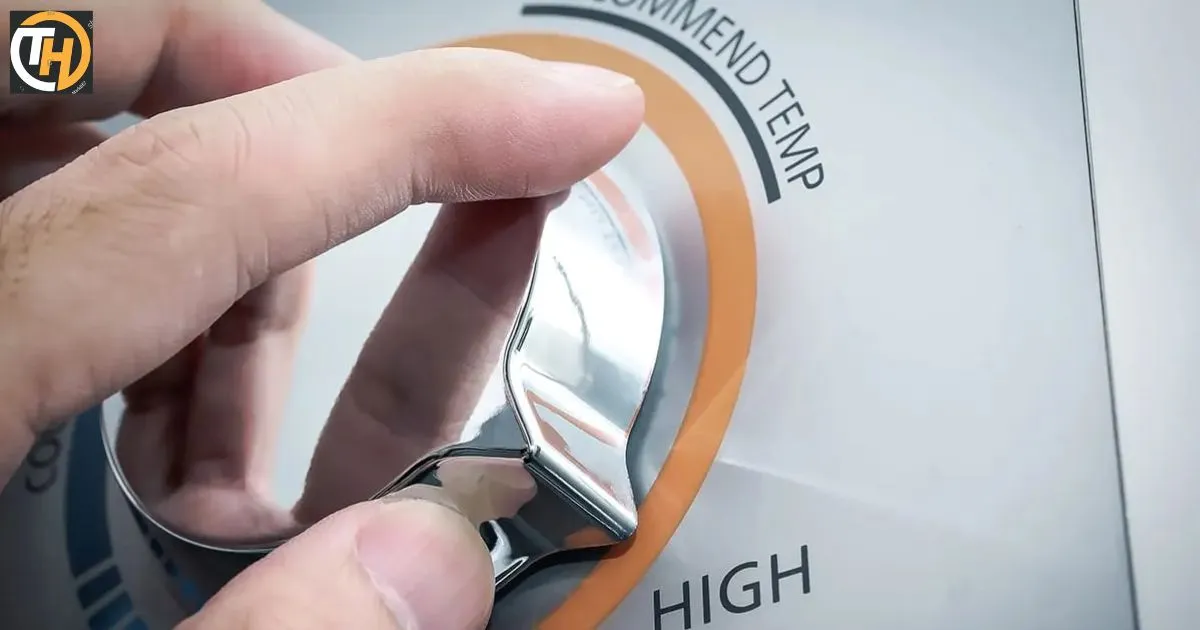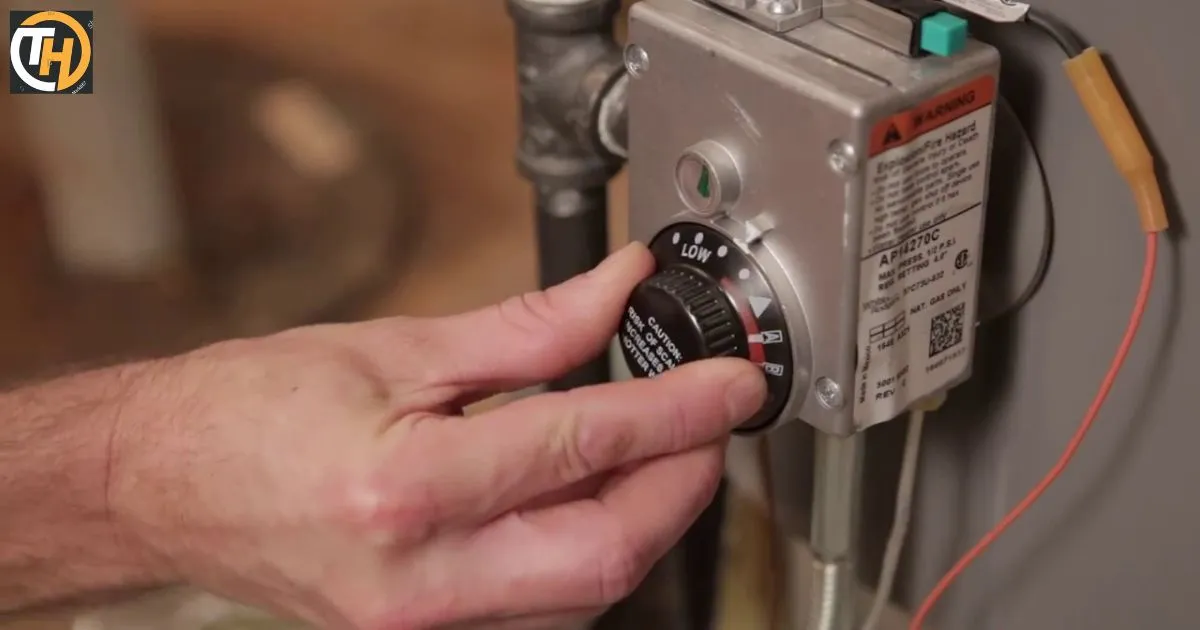The water heater in your home plays a crucial role in providing warm water for various daily tasks. Whether it’s for a soothing shower or efficient dishwashing, having the right water temperature is essential. In this guide, we’ll explore the simple yet impactful task of adjusting your water heater’s temperature.
When it comes to hot water in your home, getting the temperature just right is essential. Whether you find your showers too hot or too cold, knowing how to adjust the water heater temperature can make a significant difference.
In this guide, we’ll take you through the process of adjusting your water heater’s temperature settings, ensuring you have the perfect warmth for your daily needs.
Understanding Water Heater Temperature
Your water heater’s temperature setting determines the temperature of the hot water it produces. Most water heaters come with a default temperature setting, which is typically around 140 degrees Fahrenheit (60 degrees Celsius). However, this setting may not be ideal for everyone. It’s important to understand that the temperature can be adjusted to better suit your preferences.
Why Adjust Water Heater Temperature?
There are several reasons why you might want to adjust your water heater’s temperature:
- Safety: Water that’s too hot can pose a scalding risk, especially if you have children or elderly individuals at home.
- Energy Efficiency: Lowering the temperature can lead to energy savings and reduced utility bills.
- Comfort: Finding the right temperature ensures your showers and taps provide the warmth you prefer.
In the following sections, we’ll guide you through the process of checking the current temperature setting, making adjustments, and ensuring safety.
Checking the Current Temperature Setting

Before you can adjust your water heater’s temperature, you need to know its current setting. Here’s how to check:
- Locate your water heater. It’s usually found in the basement, garage, or utility room.
- Look for the temperature dial or thermostat. This is typically a round knob or a digital display.
- Use a thermometer to check the temperature of the hot water coming out of one of your taps. Be cautious as the water can be very hot.
- Compare the tap water temperature with the thermostat setting to determine if any adjustments are needed.
How to Adjust Water Heater Temperature
If you find that the water temperature is not to your liking, you can easily adjust it. Here’s a step-by-step guide:
Safety First: Turn Off the Power
Before you begin any adjustments, safety should always be your priority. If you have an electric water heater, locate your circuit breaker panel and switch off the power by flipping the breaker dedicated to the water heater to the “off” position. For gas water heaters, find the gas valve and turn it to the “pilot” setting.
Locate the Temperature Dial
Now that the power is off, it’s time to locate the temperature dial or control panel on your water heater. The exact location might vary depending on the type and model of your heater. In electric water heaters, you usually need to remove the upper panel’s cover to access the thermostat. For gas water heaters, the temperature control is often found near the bottom of the unit.
Adjust the Temperature
Once you’ve accessed the temperature sensor dial or control panel, it’s time to make the desired temperature adjustments. You can typically turn the dial to set your preferred temperature. Most experts recommend keeping the water heater temperature between 120-125 degrees Fahrenheit (49-52 degrees Celsius).
Restore the Power
With the temperature adjustment made, it’s time to restore the power to your water heater. If you have an electric water heater, return to your circuit breaker panel and switch the breaker back to the “on” position. For gas water heaters, check that the gas valve is set to a functioning position.
Safety Precautions
Adjusting your water heater’s temperature can enhance your comfort, but safety should always be paramount. Here are crucial precautions to follow during the process:
Power Down First: Before you make any adjustments, it’s imperative to turn off the power supply to your water heater. This step is crucial for both electric and gas water heaters. For electric heaters, locate your circuit breaker panel and switch off the power by flipping the breaker dedicated to the water heater to the “off” position.
Handle Hot Water with Caution: As you make temperature adjustments, always exercise caution when handling hot water. The water inside the heater can be scalding hot and cause severe burns.
Gas Leak Awareness: If you have a gas water heater, be particularly vigilant about gas leaks. While making adjustments, if you detect the smell of gas – a distinct, pungent odor – it’s a cause for concern. In the event of a suspected gas leak, act swiftly and decisively.
The correct temperature range
To ensure the optimal performance of your water heater and meet your specific needs, it’s crucial to set the correct temperature. The ideal temperature range for most homes typically falls between 120-125 degrees Fahrenheit (49-52 degrees Celsius). This range balances safety, energy efficiency, and your personal comfort.
By setting your water heater within this range, you can enjoy a steady supply of hot water while minimizing energy consumption and reducing the risk of scalding accidents. Adjusting the temperature to this sweet spot ensures that you have the best of both worlds when it comes to your water heating needs.
Testing the New Temperature
With your tankless water heater installed and the initial temperature setting configured, it’s crucial to verify that the hot water meets your preferences. Follow these simple steps to ensure your system is delivering the ideal temperature:
- Turn On a Hot Water Faucet
- Begin by turning on a hot water faucet in your home. You can use a bathroom sink, shower, or any other outlet that connects to the tankless water heater. Allow the water to run for a few minutes to ensure it’s fully heated.
- Check the Temperature
- Fill a container or simply place your hand under the running water to assess its temperature. Ensure that the hot water’s temperature aligns with your desired setting.
- Making Minor Adjustments
- If the water is not yet at the ideal temperature, you can make minor adjustments. Tankless water heaters often have user-friendly controls, allowing you to fine-tune the temperature setting according to your preferences.
- Re-Testing
- After making any adjustments, repeat the testing process. Turn on the hot water faucet, check the temperature, and compare it to your preferred level. Continue adjusting as needed until you achieve the desired temperature.
Energy Savings and Comfort

One of the compelling benefits of adjusting your tankless water heater’s temperature is the potential for both energy savings and improved comfort. Here’s how this simple tweak can make a significant impact:
Reduced Standby Heat Loss: Tankless water heaters are designed to heat water on demand, which means they don’t maintain a large reservoir of hot water. However, they still have components that can cause minimal standby heat loss.
Customized Comfort: Lowering the temperature setting doesn’t mean sacrificing comfort. In fact, it allows you to customize your hot water experience according to your preferences.
Cost Savings: Energy-efficient practices translate into cost savings. By reducing standby heat loss and only heating water when needed, you’ll see a positive impact on your energy bills.
Extended Appliance Lifespan: Running your tankless water heater at a lower temperature can reduce the wear and tear on the system. It can lead to a longer lifespan for the unit, minimizing the need for costly repairs and replacements. This means more reliable hot water for an extended period.
Here’s a table summarizing the article with key points descriptions:
| Section | Key Points |
| Introduction | Importance of adjusting water heater temperature. |
| Why Adjust | Factors such as safety, energy efficiency, and personal comfort. |
| Tools Needed | List of tools and materials required for the adjustment. |
| Safety Precautions | Ensuring safety when working with water heaters. |
| How to Adjust | Step-by-step guide to adjusting the water heater temperature. |
| Energy Savings | Benefits of adjusting temperature for energy efficiency. |
| Conclusion | Importance of following safety precautions and enjoying hot water. |
This table provides an overview of the article’s main sections and their key points.
FAQs
How do I adjust the temperature of my hot water heater?
You can adjust the temperature of your hot water heater by locating the thermostat and turning it to your desired setting.
What temperature should the water heater be set at?
The recommended water heater temperature is typically around 120 degrees Fahrenheit (49 degrees Celsius) for energy efficiency and safety.
Can you adjust the temperature on a hot water system?
Yes, you can adjust the temperature on a hot water system using the thermostat settings on the heater.
Why is my water heater temperature low?
A low water heater temperature could be due to a thermostat issue, sediment buildup, or a faulty heating element.
Conclusion
Adjusting the water heater temperature is a simple yet effective way to enhance safety, comfort, and energy efficiency in your home. It ensures your hot water is just the right temperature for your needs while also contributing to lower energy bills. Remember to follow the safety precautions and guidelines mentioned in this guide to make the adjustment hassle-free.
By taking the time to adjust your water heater temperature, you not only gain control over your comfort but also contribute to a more sustainable and energy-efficient home. It’s a small change that can make a big difference, ensuring that you have hot water just the way you like it while minimizing unnecessary energy consumption.











